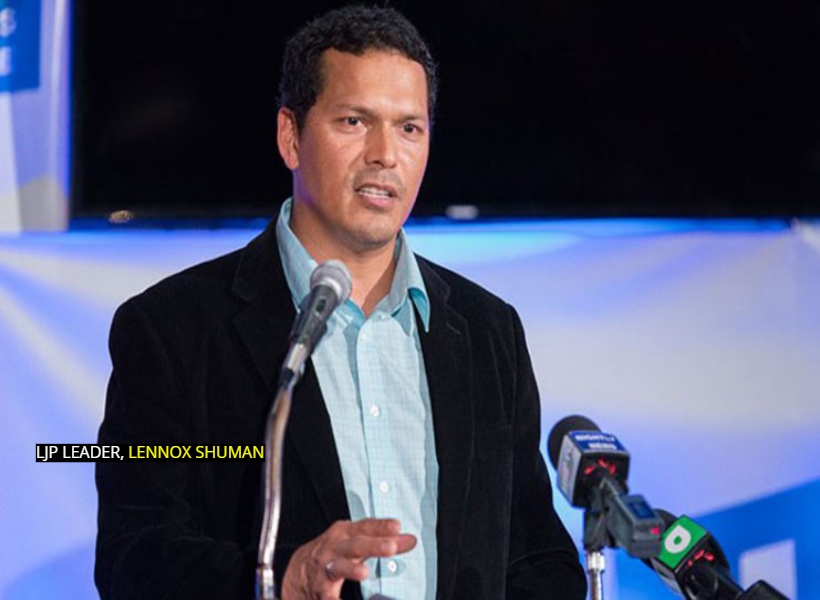Dear Editor,
Ram and McRae conducted a “survey” that purports to represent the views of “all Guyanese” in respect of the renegotiation of the 2016 Petroleum Agreement. The total number of respondents, according to the report, is 139.
There is an estimated (conservatively) 1.8 million Guyanese residing home and abroad (including 2nd and 3rd generation Guyanese residing out of Guyana). Yet, the survey respondents, which represented 0.008% of the Guyanese population residing home and abroad, is being sold egregiously by a small group of “the usual suspects”, as a representation of the views of all Guyanese.
When the survey was conducted, I had the opportunity to review the survey questions. Not only were the questions biased, but also such that they were framed in a manner to yield a certain type of result. For example, we do not know who the 139 respondents are, whether they represent a wide cross section of the Guyanese society: professionals, the private sector, civil society, etc., or whether the respondents were extracted from Ram and McCrae’s database of clients. The lack of transparency in this regard leaves much to be desired.
A proper, unbiased, and objective survey of this nature ought to have covered two important elements that were completely omitted: (i) the implications of what is being proposed by the survey were not addressed for the benefit of the respondents to consider, which may have altered their responses and (ii), the initiatives, policies and other ways in which the Government sought to maximize the in-country value from the 2016 Agreement. In particular, if the respondents knew of the implications, the survey result may have been very different.
That being established, let’s examine the implications of the “renegotiation”, especially since Guyana’s neighbour to the west, Venezuela, is an excellent case study.
· The Contractor, ExxonMobil Guyana (EMGL) has already signaled on multiple occasions publicly that it is not interested in renegotiating the 2016 Agreement. Pursuant to the Petroleum Agreement (2016), both parties (Government and Contractor) would have to agree to renegotiation.
· Should the Government impose renegotiated fiscal terms without the consent of the Contractor, ExxonMobil and their Co-Ventures, this would result in arbitration as in the case of Venezuela versus ExxonMobil.
· Any move to arbitration in that circumstance, would halt production and the sector altogether, and the arbitration can take as long as 10 years to settle, as in the case of Venezuela versus ExxonMobil.
· In the case of Venezuela, ExxonMobil and their co-venture partner sought in excess of US$40 billion in compensation but was awarded a total of US$10 billion through the arbitration process, that lasted for 10 years.
· From the time the arbitration process was initiated by ExxonMobil in 2007 against Venezuela, Venezuela’s GDP fell from US$315 billion (2008) to US$102 billion by 2018, a loss of US$213 billion or 68% in eleven years. This culminated into one of the worst humanitarian, social and economic, political and geopolitical crises in history, of a South American country. It has been marked by hyperinflation, escalating starvation, disease, increasing crime and mortality rates, resulting in massive emigration.
Returning to the case of Guyana, there were two unprecedented events that weakened the incumbent government’s position, even if it wanted to renegotiate the Stabroek Block’s Petroleum Agreement. The government would have been in a stronger position if by the time it assumed office following the general and regional elections, EMGL had not moved to production, and a Final Investment Decision (FID) was not yet made.
Recall that after the successful passage of the “No-Confidence Motion” (NCM) in December 2018, the general and regional elections were constitutionally due three months thereafter; but was not held until March 2020, then the election result was declared five months later in August 2020. Consequently, almost one and a half years later, there was a change in government following the NCM in December 2018 and the general elections in March 2020.
Cognizant of these ramifications, EMGL intentionally, aggressively transitioned into production in record time by December 2019 from commercial discovery in May 2015. By EMGL’s own admission, the timeline by which they moved from discovery to first oil in less than five years, was a record achievement across the global industry.
Historically, it took about ten years to develop projects from commercial discovery to production following an investment decision. Therefore, considering that the FID for the Stabroek Block was based on the 2016 Agreement and the fact that EMGL had already started production, renegotiation was thus made difficult in these circumstances.
Notwithstanding, the government managed to achieve the following, aimed at maximizing the in-country value:
(i) As soon as the government assumed office in August 2020, it moved swiftly to implement Local Content Legislation which is now generating an estimated GY$200 billion annually from cost-oil to procure goods and services from Guyanese suppliers and provision of employment opportunities for Guyanese.
(ii) Work began on the implementation of the gas-to-energy project which would translate to another GY$200 billion in direct and indirect benefits for the economy.
(iii) A new model Production Sharing Agreement (PSA) was developed with significantly improved fiscal conditions that will result in the government’s take increasing from 28% to >40%. The new fiscal terms include the introduction of a 10% corporate tax, 10% royalty up from 2%, cost recovery ceiling down to 65% from 75%, and profit oil remains at 50%. This new PSA will apply to all future production agreements.
(iv) A new modern Petroleum Activities legislation was developed (already enacted into law), repealing the outdated Petroleum law.
More importantly to note is that apart from the Stabroek Block, which is the only block that had moved to production before the government assumed office in 2020, there are nine other active Petroleum Prospecting/Exploration Licenses. Accordingly, as new commercial discoveries are made, the new PSA/fiscal terms shall apply to those. In other words, the government has effectively renegotiated nine other contracts that were based on the old fiscal terms because those have not moved to production as yet unlike the Stabroek Block.
Yours faithfully,
Joel Bhagwandin













